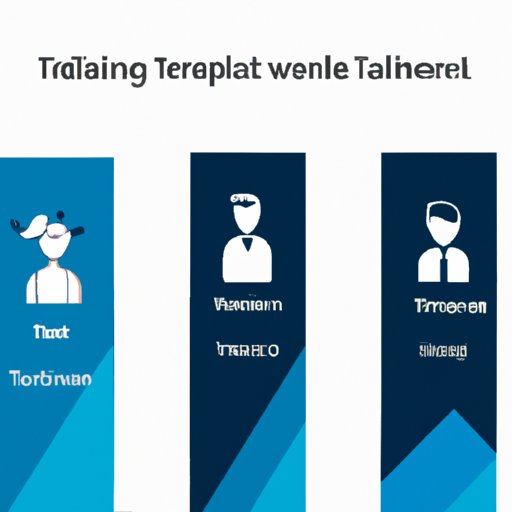I. Introduction
If you’re a recruiter or HR professional, it’s likely that you’re familiar with LinkedIn, the world’s largest professional network. But have you heard of LinkedIn Talent Insights? This powerful tool offers a comprehensive view of the talent pool and job market trends, empowering recruiters and hiring managers with targeted insights to help them make informed business decisions. In this article, we’ll cover the basics of LinkedIn Talent Insights and explore how it can be used to inform recruitment strategies, analyze competitor data, spot industry trends, and enhance employer branding efforts.
II. Explaining the Basics of LinkedIn Talent Insights
What exactly is LinkedIn Talent Insights, and why does it matter? Simply put, Talent Insights is a data-driven tool that provides real-time insights on the job market and potential candidates. It allows users to break down data by various categories such as job function, skills, and geography, and provides detailed insights into how different factors interact with one another. Talent Insights is divided into two main categories: Talent Pool and Company Report.
The Talent Pool feature allows users to access real-time data on the talent pool for any given position. With this feature, recruiters can identify the top locations where specific skills are in high demand, determine which companies are hiring for similar positions, and pinpoint the skills that top candidates possess. On the other hand, Company Report enables users to analyze their own company’s talent brand and compare it to that of competitors. This feature allows users to see which companies are attracting top talent, what skills are most in-demand within the industry, and which competitors are emerging as leaders in their respective fields.
III. Using LinkedIn Talent Insights for Recruitment
Recruiting is perhaps the most widely-used application for LinkedIn Talent Insights, and with good reason. Talent Insights can be an invaluable tool for identifying top candidates, understanding the skills and experience necessary for certain positions, and tracking hiring trends. With Talent Insights, recruiters can identify top candidates to target, view job posting insights to determine which roles are most in-demand, and benchmark their hiring process and time-to-hire against others in the industry.
For example, imagine you are a recruiter for a major tech company looking for a software engineer. By using Talent Pool, you can find out which locations in the world are home to the most software engineers with the relevant skills, which companies are hiring for similar positions, and the most in-demand skills for the position. This type of targeted information can help you tailor your recruitment strategy, enabling you to attract the top talent in the competitive field of software engineering.
IV. Analyzing Competitor Data with LinkedIn Talent Insights
In addition to recruitment, Talent Insights can also be used to analyze competitors’ strengths and weaknesses. With Company Report, users can identify industry trends and get a holistic view of their competitors’ hiring and branding efforts. Talent Insights provides a comprehensive view of competitors’ hiring trends, employee skills and experience, and what they’re looking for in candidates. This data can be invaluable when developing employer branding and recruitment strategies.
For example, let’s say you are the director of HR at a major consulting firm competing with some of the top consulting firms in the world. By using Company Report, you can view data on your competitors’ top locations for hiring, the most in-demand skills in the industry, and how employee experience and tenure affect hiring trends. Armed with this data, you can develop a strategy to position your company as an attractive employer among top talent in the industry.
V. Spotting Talent Trends with LinkedIn Talent Insights
In addition to recruitment and competitive analysis, Talent Insights can also be used to spot trends in job markets. With a few clicks, users can view in-depth analysis of industry demand and supply, salary ranges, and the most popular companies and industries on LinkedIn in a specific area. This type of information can help HR professionals and recruiters stay up-to-date on industry trends and tailor their hiring strategies accordingly.
For instance, let’s say you are a recruiter in the rapidly-growing healthcare industry. With Talent Insights, you can determine which healthcare specialties are in highest demand, learn about salary ranges for specific roles, and view hiring trends specific to the healthcare industry. This information can help you make informed decisions when recruiting in this fast-paced and constantly-evolving industry.
VI. Improving Employer Branding with LinkedIn Talent Insights
LinkedIn Talent Insights can also be used to enhance a company’s brand and reputation as an employer. By analyzing employee sentiment and reputational data, companies can gain insights into how they’re perceived by potential employees and develop a strategy to improve their employer brand. This data can also be used to understand the strengths and weaknesses of the company’s culture and work environment, and make data-driven decisions to improve these areas.
For example, let’s say that your company is struggling to attract top talent in a highly competitive industry. By using Talent Insights to analyze employee reviews and sentiment data, you can identify specific aspects of your company culture that candidates find attractive or unappealing. With this information, you can develop a targeted strategy to improve your employer brand and attract the top talent in your industry.
VII. Conclusion
LinkedIn Talent Insights is a powerful tool that can provide real-time data-driven insights into the job market and potential candidates. Whether used for recruitment, competitive analysis, understanding industry trends, or enhancing employer branding efforts, Talent Insights can provide invaluable information to HR professionals and recruiters alike. By leveraging this tool, companies can make informed business decisions and stay ahead of the competition, all while attracting and retaining the top talent in their industries.
(Note: Is this article not meeting your expectations? Do you have knowledge or insights to share? Unlock new opportunities and expand your reach by joining our authors team. Click Registration to join us and share your expertise with our readers.)
